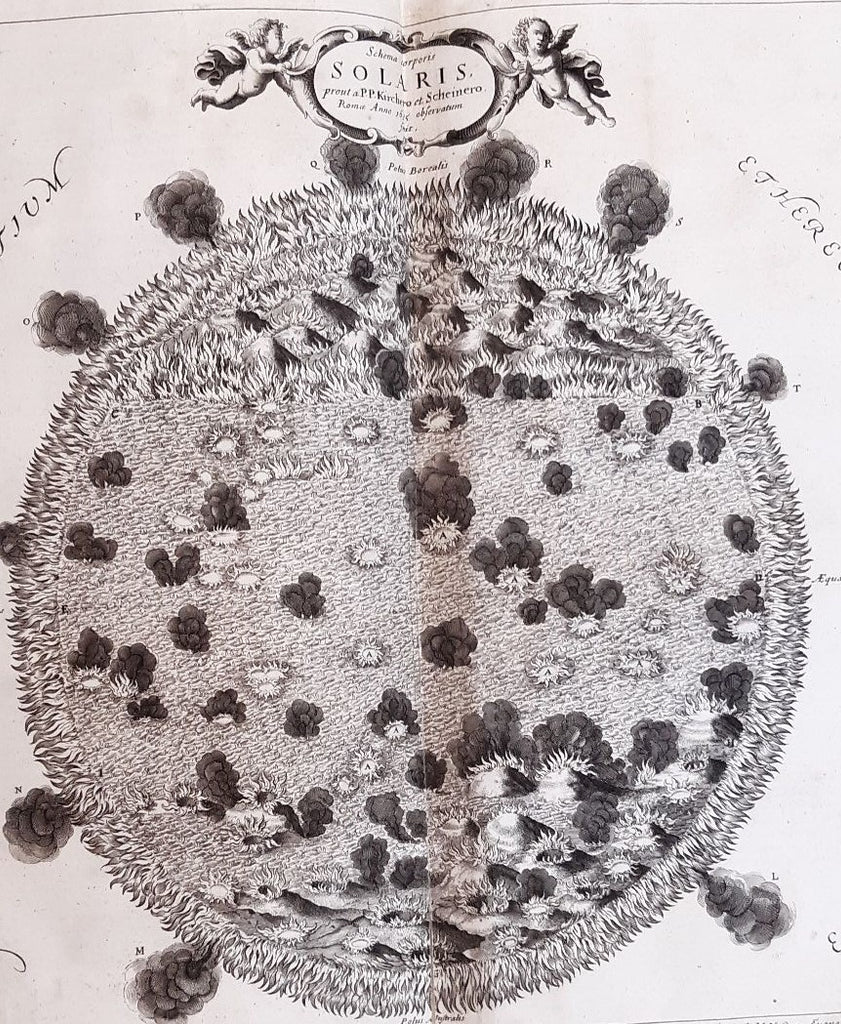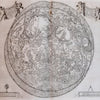The Sphere of Marcus Manilius
SHERBURNE, Edward











London: Printed for Nathanael Brooke. 1675.
Folio. 415x265mm. pp. [20], 68, [2], 221, [9]. Eleven leaves of plates, six folding. With an additional engraved title page, "The sphere of M. Manilius", signed and dated: W. Hollar fecit 1673. Contemporary calf, rebacked, edges and corners repaired. Wear to boards. On the upper cover, in gilt is stamped "Ex dono Iacobi Holliur A.M. Coll Regal Cam F. To the Mathematicall Schoole in Christs Hospital". Internally a few leaves have been repaired at the corners (without affecting the text), there are two repaired closed tears to the folding map of the Two Hemispheres and the folding map of the Sun has a tear along the central fold (no loss) and has a brown mark to the lower right corner (not affecting the image). Some foxing and toning to edges but overall a very good, complete copy of an important book in the history of early modern English science.
Sherburne's Sphere of Marcus Manilius is a translation, in verse form, of the first book of Manilius's first century AD Astronomicon. In the long appendix Sherburne sets out a history of astronomy and "A Catalogue of the Most Eminent Astronomers, Ancient and Modern" as well as detailed observations of the Sun, the Moon, the Planets and Stars and Fiery Meteors and Comets. The book is justly celebrated for its striking plates, in particular the Two Hemispheres which is often lacking. But it "also embodies a very specific agenda significant in the history of science in late 17th-century England: to promote modern astronomy and encourage its readership to provide financial patronage". (Whipple Library, Cambridge) This promotion of astronomy provides a connection with the gift of this book to the Mathematical School at Christ's Hospital. This Royal Mathematical School was founded in 1673 specifically to teach the mathematics and science needed for navigation. Samuel Pepys, as part of his work at the Admiralty was closely involved with the School and in 1694 Isaac Newton suggested a new syllabus which was used for a time. It is rather touching to think that this copy of The Sphere was used to educate generations of pupils in how to follow the sun and the moon and the stars when plotting their routes across the oceans.
Folio. 415x265mm. pp. [20], 68, [2], 221, [9]. Eleven leaves of plates, six folding. With an additional engraved title page, "The sphere of M. Manilius", signed and dated: W. Hollar fecit 1673. Contemporary calf, rebacked, edges and corners repaired. Wear to boards. On the upper cover, in gilt is stamped "Ex dono Iacobi Holliur A.M. Coll Regal Cam F. To the Mathematicall Schoole in Christs Hospital". Internally a few leaves have been repaired at the corners (without affecting the text), there are two repaired closed tears to the folding map of the Two Hemispheres and the folding map of the Sun has a tear along the central fold (no loss) and has a brown mark to the lower right corner (not affecting the image). Some foxing and toning to edges but overall a very good, complete copy of an important book in the history of early modern English science.
Sherburne's Sphere of Marcus Manilius is a translation, in verse form, of the first book of Manilius's first century AD Astronomicon. In the long appendix Sherburne sets out a history of astronomy and "A Catalogue of the Most Eminent Astronomers, Ancient and Modern" as well as detailed observations of the Sun, the Moon, the Planets and Stars and Fiery Meteors and Comets. The book is justly celebrated for its striking plates, in particular the Two Hemispheres which is often lacking. But it "also embodies a very specific agenda significant in the history of science in late 17th-century England: to promote modern astronomy and encourage its readership to provide financial patronage". (Whipple Library, Cambridge) This promotion of astronomy provides a connection with the gift of this book to the Mathematical School at Christ's Hospital. This Royal Mathematical School was founded in 1673 specifically to teach the mathematics and science needed for navigation. Samuel Pepys, as part of his work at the Admiralty was closely involved with the School and in 1694 Isaac Newton suggested a new syllabus which was used for a time. It is rather touching to think that this copy of The Sphere was used to educate generations of pupils in how to follow the sun and the moon and the stars when plotting their routes across the oceans.
